International Beer Day is right around the corner.
It’s a perfect time to get employees together to celebrate your favorite beverages.
Whether it’s a hefty stout, a crisp pale ale, a mellow and smooth lager, or a sweeter lambic, beer has characteristics for just about everyone.
International Beer Day is celebrated globally on the first Friday of August. We’ve gathered some great information and ideas to help you celebrate International Beer Day, no matter where you are.
Beer is one of the oldest beverages known. Almost every society and culture, across the continents and across eras has some form of brewing, dating back all the way to the ancient Sumerians.
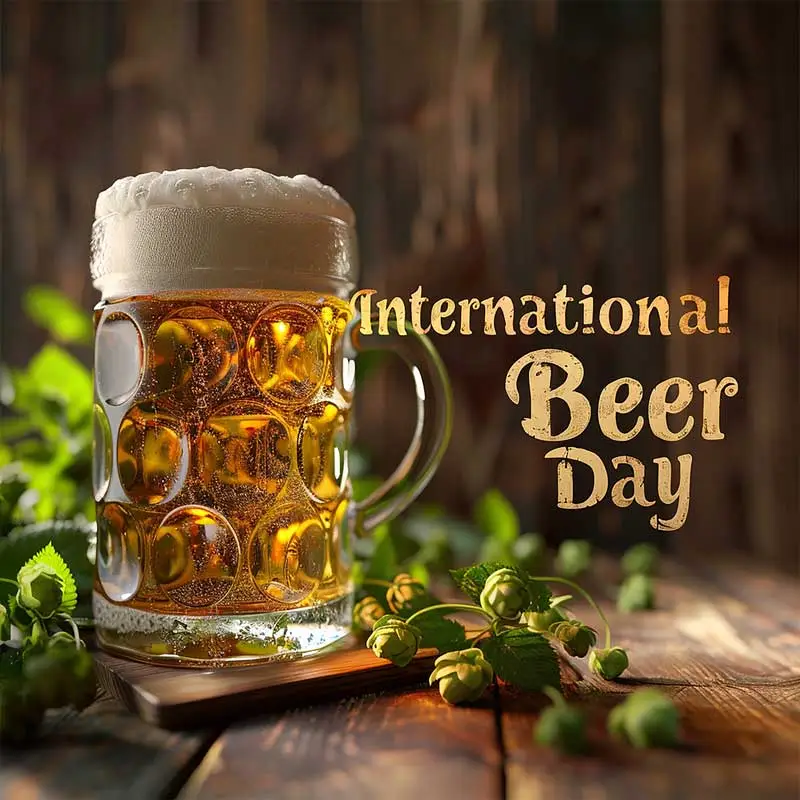
International Beer Day was established in 2007 by Jesse Avshalomov in Santa Cruz, California, with the objective to gather friends and enjoy beer, while celebrating the craft of brewing and showing appreciation for those involved in beer production.
Over the years, the day has become a worldwide celebration spanning 207 cities, 80 countries, and 6 continents.
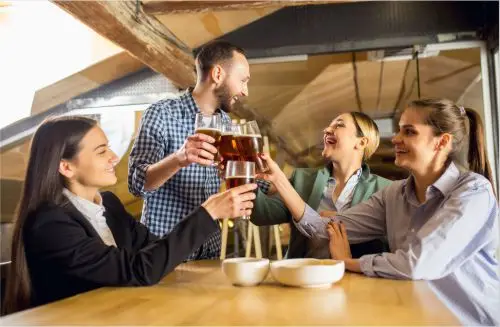
There are many responsible and fun ways to use International Beer Day to bring employees together; in-person, and remotely.
International Beer Day is a fantastic time to use the day for team-building and to recognize and reward employees.
There are a range of reasonable get-togethers, like beer tasting, brewery tours and beer-themed social gatherings you can put together for employees. Learn about different types of beers, sample different types and learn about the production process.
It’s a great opportunity to support local breweries in your home town(s).
Virtual gatherings are also possible where samples are sent out in advance with instructions to wait for International Beer Day.
All sorts of activities are possible from quizzes and trivia games related to beer, to add a fun, competitive element.
Employee recognition gifts can include providing gift cards for local breweries, beer-tasting experiences, or craft beer subscription services. These approaches can encourage team bonding and highlight the company’s appreciation for their employees’ hard work.
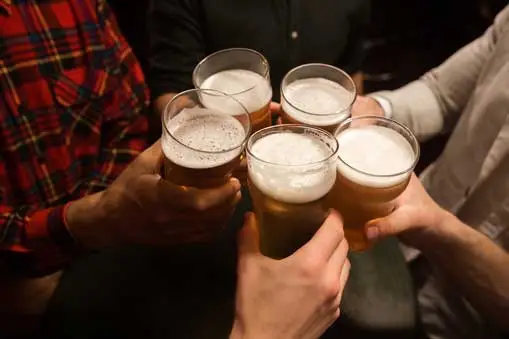
Host a Tasting Event:
Arrange a beer tasting event featuring a variety of local and international beers.
Host a local brewer to give a talk and lead a tasting session.
Provide tasting notes and encourage employees to discuss their favorites.
Beer and Food Pairing:
Offer a selection of foods that pair well with different types of beer.
Consider having stations with different themes, like cheese and beer, BBQ and beer, or dessert and beer pairings.
Brewery Tour:
Organize a tour of a local brewery for your team.
If a physical tour isn’t feasible, consider a virtual tour or inviting a brewer to the office.
Beer Trivia or Games:
Host a beer-themed trivia game or quiz.
Organize fun games like a beer pong tournament (with non-alcoholic beer for a work-friendly twist) or a blind beer tasting competition.
Educational Workshops:
Arrange a workshop on beer making or the history of beer.
Invite a beer expert to share insights into different brewing techniques and beer styles.
Decorate the Office:
Set up beer-themed decorations to create a festive atmosphere.
Create a cozy, pub-like area where employees can relax and enjoy their drinks.
Offer Non-Alcoholic Options:
Ensure you have non-alcoholic beers and other beverages available for those who prefer not to drink alcohol.
Highlight the variety and quality of non-alcoholic options to make everyone feel included.
Provide Responsible Drinking Guidelines:
Set a limit on the number of drinks per person, like using drink vouchers.
Encourage moderation and provide plenty of food to accompany the beer.
Have transportation options ready, such as reimbursed rideshares or designated drivers.
Beer Swap:
Organize a beer swap where employees bring their favorite beers to exchange with coworkers.
Encourage participants to share why they chose their particular beer.
Provide Beer Giveaways:
Give out gift cards to local breweries or payment cards to use for beer swag and for brewery visits.
Get some beer signs, t-shirts and coasters for fun giveaways.
Charity Fundraiser:
Turn the celebration into a charitable event by partnering with a local cause.
Donate a portion of the proceeds from the event or set up a raffle with beer-related prizes.
Celebrating responsibly
Limit the amount served. Offer drink tickets or vouchers or other means to limit the per-person consumption that each employee can have.
Have plenty of festive and appealing non-alcoholic choices available to those who chose not to drink.
Don’t “top-off” drinks. Refills are difficult to track.
Serve plenty of food and snacks. Avoid serving too much alcohol on empty stomachs.
Limit the choices of beverages to just a few. Offering a limited selection may help prevent overconsumption.
Encourage discrete reporting. Set up a discreet way for employees to report any inappropriate behavior or safety concerns.
Be mindful that some folks may attempt to circumvent your controls or solicit drink vouchers from colleagues.
Make sure information about local taxis or ride-sharing apps is available and have HR or designated personnel on hand during the event. Make no judgements if someone wants a ride!
Communicate the organization’s expectations in advance. Remind everyone, in advance, to drink responsibly. An email or communication in advance is a good idea.
The art of brewing dates back thousands of years. Evidence suggest that beer was first brewed by the ancient Sumerians at about 5,000 BCE! Brewing may have held an important place in society and in religion at the time. Early records describe a beverage called “sikaru,” which was a barley-based drink that played a meaningful role in Sumerian society. Ninkasi, their goddess of beer, was celebrated in prayers and hymns of the time.
Ancient Egyptians refined the brewing process. Beer was ubiquitous and a staple in the Egyptian diet, consumed by people in all classes of society. Emmer wheat and barley was fermented by Egyptian brewers to create a variety of different beers.
Beer was also consumed by the Greeks and Romans, although both societies had a marked preference for wine. Soldiers in the Roman Legions consumed beer in the “north” where wine making was less developed.
Brewing continued to advance during the middle ages.
Thank the monasteries!
Monks are responsible for first using hops as a flavoring agent and preservative, one of the main characteristics of the beer we enjoy today.
The use of hops began in the 9th century and became widespread by the 13th century.
Some medieval beers had lower alcohol content and were drunk for breakfast. Other stronger beers were for lunch and dinner and at the end of the day. People in cities in the 16th century drank about 250 liters of beer per person per year. That’s three-quarters of a liter a day.
When the Renaissance arrived, advancements in brewing began to occur.
Science, baby!
Thermometers brought better control and consistency of temperature. Hydrometers allowed for better monitoring and control of the density or specific gravity of the liquid, an important means to measure the available sugar and progress of the brewing cycle.
Instruments brought consistency to the results.
Beer was the most common alcoholic drink consumed by both nobility and peasants during the English Renaissance period.
Commercial brewing began.
In Germany, where brewing is considered an art, the Beer Purity Laws of 1516 (Reinheitsgebot) strictly regulated the ingredients of beer to just three original (later four, after the discovery of yeast) components.
Industrialization brought beer making into the era of large scale industry.
We have the Czech town of Pilsen to thank for developing and popularizing the carbonated golden beer we consume so much of today. They first developed the Pilsner style in the 1870s.
Louis Pasteur’s famously advanced our understanding of fermentation, and new innovations like steam power, refrigeration, and advances in microbiology improved beer production and storage.
In the United States a beer renaissance began in the late 1960s and 1970s. At the time regional breweries were consolidating and closing.
It was in that business environment that the real driving force behind this renaissance — the craft beer movement — started to really pick up steam.
Breweries are now a ubiquitous fixture of the landscape.
Brewing is a global industry with flavors and styles for just about every taste. From the Sumerians to modern craft brewers, beer has enduring appeal.
Craft brewing is big business in the United States. But it still only represents roughly 13% of the entire beer market. In terms of revenue, craft beer represented about 25% of total beer sales in 2023. The premium, in particular, points to craft beer’s popularity for on-site sales.
Craft beer in the United States has experienced strong growth in the past few decades.
Note that the rich and varied history of America’s commercial beers before prohibition and after prohibition is ignored here. That’s a very interesting story (A Concise History of America’s Brewing Industry) in itself.
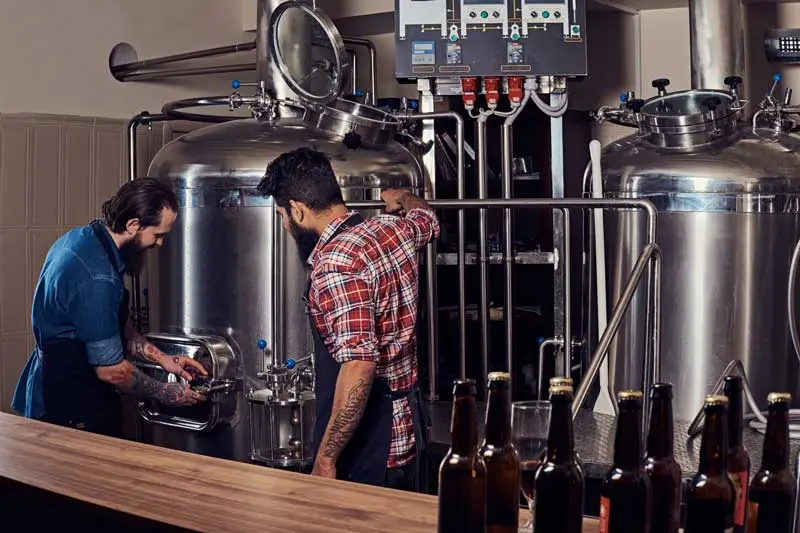
1960s-1970s: Movement Begins
The US craft beer movement began in the 1960s and 1970s.
Fritz Maytag purchased Anchor Brewing Company in San Francisco in 1965, and revitalized the brewery. The ales included the flavorful, traditional “Steam” style that contrasted dramatically from the mass-produced lagers produced by the major brewers.
1970s-1980s: Pioneering Brewmeisters
Homebrewing was legalized in 1978, and signed into law by President Jimmy Carter.
Craft brewing interest took off.
Homebrewers began producing a variety of styles and began to open a wave of microbreweries and brewpubs.
In 1979, Jack McAuliffe founded New Albion Brewing Company in California, widely considered the first modern microbrewery in the U.S.
1980s-1990s: Growth
Sierra Nevada Brewing Company (1980) and Boston Beer Company, maker of Samuel Adams (1984) began operations. They remain two powerhouses in the craft beer industry.
New styles became popular. Brewers like Ken Grossman of Sierra Nevada popularized hop-forward beers, such as the iconic Sierra Nevada Pale Ale.
The Brewers Association, a trade group focused on the interest of craft brewers was founded in 1982 and plays a significant role in supporting the industry.
1990s-2000s: Popularity
Craft beer became popular and gained widespread growth in the 1990s, with a surge in the number of breweries across the country.
Craft beer became synonymous with innovation and quality, with brewers experimenting with ingredients and styles.
Unusual (at least at first) hop-forward beers like Lagunitas began to gain traction.
Brewpubs and microbreweries became community hubs, fostering local pride and encouraging the growth of the beer tourism industry.
2000s-Present: Maturation
There was an explosive growth in the number of craft breweries, reaching over 8,000 by 2019.
The craft beer movement diversified, with breweries focusing on sustainability, local ingredients, and unique flavors.
American craft brewers never hesitate to incorporate ideas from around the world. The rise of the IPA (India Pale Ale – originally an English innovation) as a dominant style reflected the American craft beer scene’s emphasis on bold, hoppy flavors.
Craft beer is a major industry in the U.S. and is responsible for transforming American beer culture, prioritizing quality, community, and innovation.
American craft beer exports are increasing.
Is this the decade where American craft brewers make a great impression for their beer on a global scale?
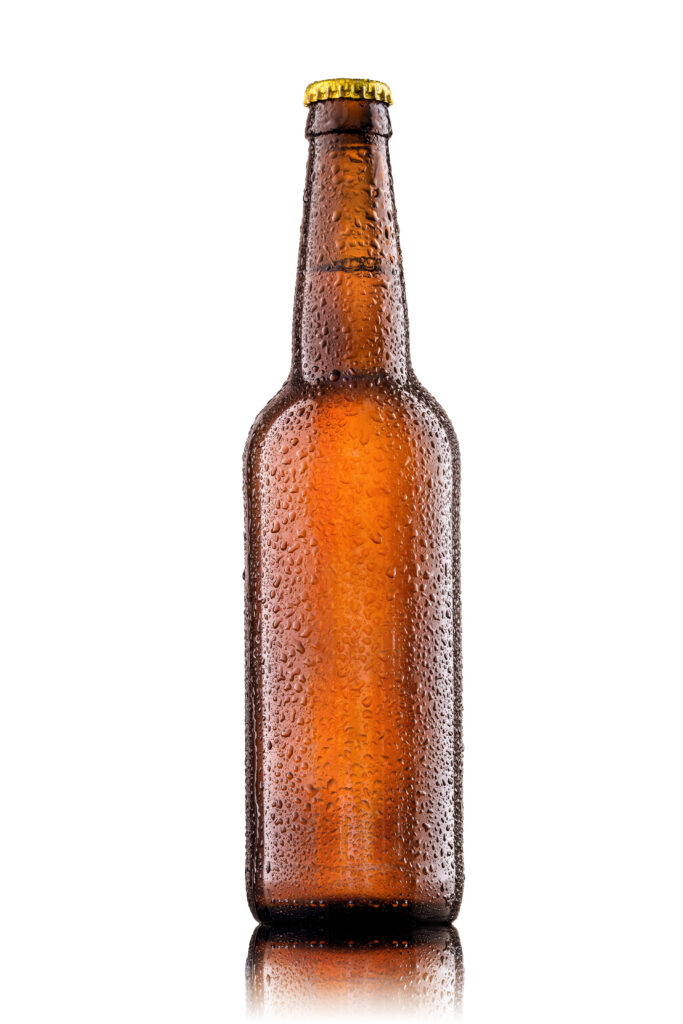
International Beer Day, celebrated on the first Friday of August, is a perfect occasion to gather and enjoy a variety of beers.
Whether you prefer a stout, pale ale, lager, or lambic, there’s something for everyone.
Originating in 2007 in Santa Cruz, California, the day honors brewing and those involved in the craft.
Beer’s history spans thousands of years, from ancient Sumerians to medieval monks who introduced hops. The Renaissance brought brewing advancements like thermometers and hydrometers.
Today, beer is a global industry with countless styles.
Celebrate at work with tasting events, brewery tours, beer trivia, and food pairings while promoting responsible drinking.
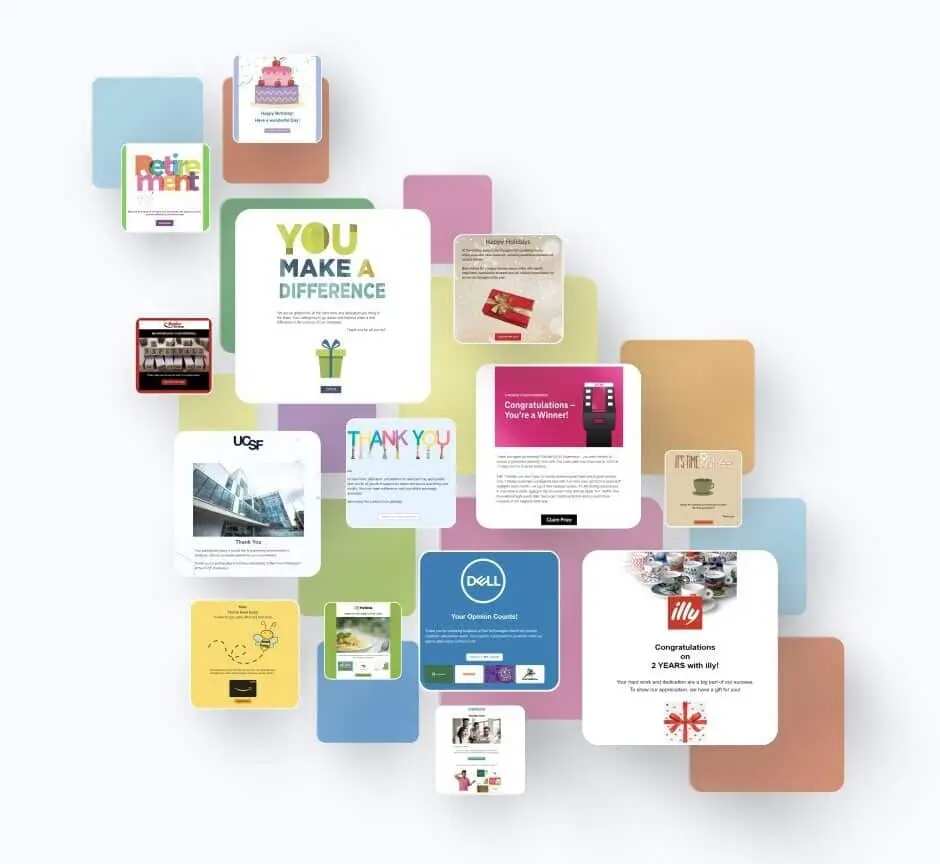
A design session is the perfect way to show you how TruCentive can help you realize your rewards, gifts, or payout goals in a real-world scenario, building a complete project with everything from your logo, design options, and messaging to incentive selection, deliveries, and reminders.
When we’re done, you’ll:


If you’re ready to start designing on your own, sign up and start sending samples. There’s no credit card required to start exploring your creative side!

Use powerful features to quickly create professional-looking incentive deliveries

With a TruCentive subscription, you get technical support for all your team members so you can get back to your project fast

Eliminate the time and frustration managing the procurement, delivery, and management of your rewards and incentives deliveries